As a number of Gumbo readers figured out, Gumbo's latest "Where Was" was Frankfurt am Main, Germany's economic capital and home, as the giant Euro sign reminded us, to the European Central Bank. Those who get the credit, in order: Jonathan L, Traveling-Canuck, Club2013, PortMoresby, GarryRF and Roderick Simpson.
I'm sometimes curious to know which clues worked for the successful guessers, and I asked a few. The answers I got: the distinctive timbered building, which didn't surprise me; the waterfront park, which did; and the trench-coated moose, which shouldn't be surprising, since he made an appearance in Gumbo on the Go last July 26th.
These pictures are from an accidental but fortuitous visit; when we planned our Central Europe trip last summer, we had no plans to be in Frankfurt beyond the airport. When I lived in Heidelberg in the late 1950s, we American teens considered Frankfurt boring and business-minded, and nothing I'd heard since had changed my mind. But with a left-over half day before our flight home, we decided to give it a try.
We focused our time on Frankfurt's oldest and most central area, the Altstadt, where the city began on the banks of the Main River. Well, not really the oldest, as we learned. Nearly every bit of Frankfurt's most famous space is actually a post-World War II reconstruction; in 1944 and 1945 most of central Frankfurt was flattened. The scene above shows Frankfurt's ancient Rathaus, or town hall on the RÖmerplatz, or Roman Square, the city's traditional center. Below, the same building in 1945, seen through the ruins of the timbered buildings in the picture at the top of this blog.

Today, these buildings, whose origins date to the 13th century, have been rebuilt; the ground floors are mostly taken up with restaurants and souvenir stores. We enjoyed a pleasant lunch there, of local sausage and stew special-ties, served with the local beverage, Ebel-wein, an apple wine that is loved by those who love it.
As you can see from the 1920s postcard at the right, there were changes over the years. In a sense, the postwar recon-struction turned back the clock to match earlier engravings. In historic recon-struction, that's always the question: what year are we aiming for?
The next picture below shows the entire RÖmerplatz area from above in 1929, looking toward these buildings from above the Rathaus.
The other major structure facing the RÖmerplatz is the Alt-Nikolaikirche, a major Protestant church, dating to the 15th century on an older found-ation. Unlike most of the buildings in the area, the church was damaged but not destroyed, and was repaired rather than reconstructed.
Nevertheless, its interior has a simplified appearance, with many more modern fixtures. I particularly liked the warm wood tones of the organ fixture.
It's also noted for its 51 bells; 4 peal hours and the rest form a carillon we unfortunately didn't get to hear.
Below, before and after pictures of the church from June 1945.
Just around the corner from the RÖmerplatz is another church with an important history, but a political rather than a religious one. It's Saint Paul's, where in early 1848, in a season of revolution across Europe that toppled a French king and tumbled governments, delegates from twenty German states gathered in a national assembly, and wrote a Constitution for a modern German empire.
Their chosen emperor, the King of Prussia, turned down their offer: he would not take the crown from commoners or allow them to undermine the rights of other German princes and kings. Although the 1848 revolution was eventually suppressed, the document formed the basis of both the Weimar constitution of 1920 and the postwar German Basic Law.
Stretching down the street from Saint Paul's is a series of buildings that are actually extensions of the Rathaus, added over the centuries. Their style varies, but they form an imposing series.
We decided to take a break for a walk along the river before visiting Saint Bartholomew's Cathedral. On the way, we passed the Frankfurt History Museum, below, which is expanding into new quarters nearby.
The expansion is part of the "Dom-RÖmer Projekt" which aims to develop some of the Altstadt areas still vacant. If the architect's drawing at the right is any sample of the project's ultimate look, well...now might be a good time to visit Frankfurt's Altstadt. Just sayin'...
There are more details, and 51 more pictures at the project's website.
The river has been at the heart of Frankfurt since the Altstadt was the whole stadt, as the map shows.
And while the river's banks were once given over mostly to commerce and industry, one wise post-war decision moved the commercial harbor away from the central area, leaving access to the banks for parks, pedestrians, boats and more, right in the heart of the city.
After crossing the river, and taking advantage of a pleasant breeze, we returned to find our way to Saint Bartholomew, often referred to just as the Frankfurter Dom, or Frankfurt Cathedral. It's the largest religious building in the city, and, unusual for a northern and mostly Protestant city, it belongs to the Catholics.
In the 1945 picture below, Saint Bartholomew, near bottom right and circled in blue, is the largest structure of any size standing. Nearby, in yellow, green and red, you can see the destruction at Saint Paul's, the Rathaus and the Alt-Nikolai.
Saint Bartholomew is actually no stranger to destruction. Built on the site of an earlier church (aren't they all?) from the 7th century, the church, also just called the Frankfurter Dom, or Frankfurt Cathedral, was built in the 14th century.
Just over 500 years later, in 1867, it was destroyed by fire, and rebuilt in its present style.
During World War II, it was hit by bombs several times, with the worst damage coming in March 1944. The outside walls suffered severe damage and the interior was completely burned out.
Then, in the 1950s, it was built again, as it stands now.
This is another church with an important historical role, as well, From 1356 until 1792, it's where the Electors met to select a new Holy Roman Emperor from among their fellow German princes and kings, and it's where the new Emperor would be crowned. Of course, over that time, the meaning and power of the position changed, but the ritual continued until Napoleon put an end to the last pretense of Holy Roman Emperor in 1806.
Left for last or left forlorn...here's the moose again. Not truly a Frankfurter, he's both ad and exhibit for the Museum of Caricature, near the Cathedral. But for a country whose Cold War history is full of clandestine operations by spies of all nations, perhaps it's really his place, too. Now where IS that squirrel?

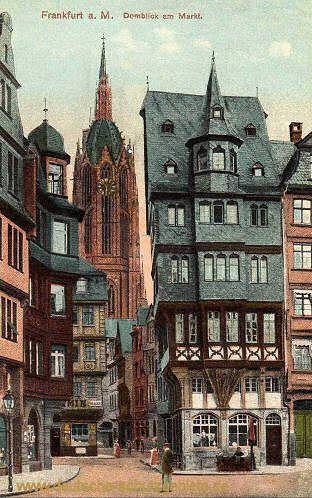
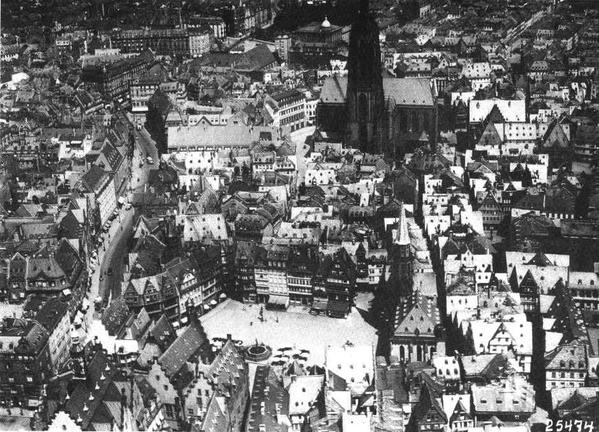
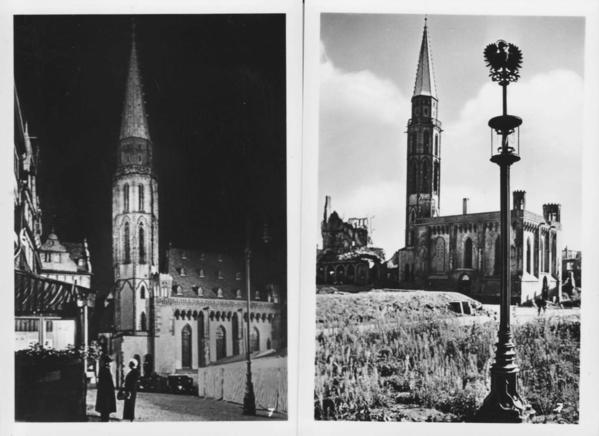
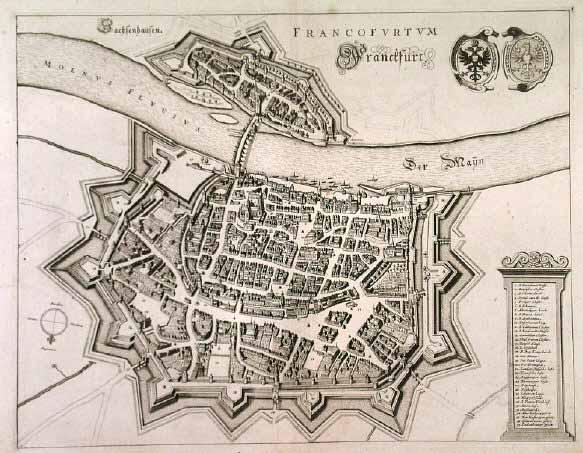
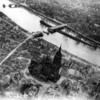
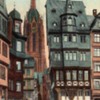

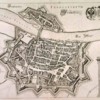
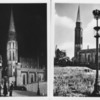
Comments (4)